1998 saw Konami undergo a Saturn renaissance of sorts, committing to release several of their bigger PlayStation hits onto SEGA’s machine – including the previous year’s blockbuster Castlevania: Symphony of the Night. Titled Dracula X: Nocturne in the Moonlight in Japan, the mighty game materialized on the Saturn in summer 1998 just as the international Saturn market collapsed; the port thus stayed in Japan. Handled by a secondary Konami team, the game featured a significant amount of new content, but… there were performance problems. This was somewhat startling, considering the Saturn’s prowess at handling 2D games. The western gaming press, keen to review such a significant title releasing on the Saturn, slapped it with the label of being a poor port of a great game.
As much as we are all Saturn fans here, there is no getting around the fact that the game is a better overall experience on the PlayStation, which is acutely frustrating as Symphony of the Night should have absolutely hummed on the Saturn. Alas, even programmer and Castlevania legend Koji Igarashi – who was not personally involved in the Saturn port – lamented that the game was of such quality that he could not in good conscience put his name on it.

But is the Saturn game so very bad? Britain’s Official SEGA Saturn Magazine reviewed the import and rated it extremely highly despite its perceived shortcomings. Those interested in the series that may have only had a Saturn at the time were still be treated to a sensational, unforgettable Castlevania adventure. Even for those who have experienced the PlayStation original, there is a solid case to be made for playing Symphony of the Night on the Saturn.
Is it Really That Bad?
Really, it isn’t.
First, the actual bad: the glorious multicolored gradient special effects that are abundant on the PlayStation original are largely absent on the Saturn version, and as superficial as it may seem, they have a considerable positive impact on the game’s aesthetic. Various visual effects are entirely missing – the blinding glow at the bottom of the massive underground waterfall, the gorgeous, almost holy rays of light coming through the stained-glass panes of the church hall in the Royal Chapel, and others. All the beautiful transparencies – spells, special items, and so on – that would fade in and out as Alucard executed his move-set on the PlayStation are nowhere to be seen on Saturn, sometimes replaced by mesh effects and sometimes absent completely. The Saturn, having a slightly higher base resolution compared to the PlayStation’s, suffers from graphics that are subtly stretched to fill the extra screen space, as opposed to the visuals being re-worked to take advantage of the Saturn’s slightly larger ‘canvas’. At points in the game there is slowdown in the port, particularly when there are multiple enemies on-screen and if Alucard has a Familiar with him, or if there are any other extra effects active… which is truly inexcusable in a 2D Saturn title, compared to the always-smooth PlayStation title. The game was built around minimizing loading times on the PlayStation, but this build is not optimal on Saturn architecture, so load times are far more noticeable. The castle map can only be displayed via a clumsy option menu selection which involves further loading, as opposed to the press-of-a-button instant map in-game in the original. Lastly, whereas the PlayStation version was a relatively easy but also well-balanced affair, the monsters found in one of the new areas in the Saturn port give a ridiculously high amount of XP, resulting in Alucard easily gaining at least a half-dozen levels within minutes. This noticeably goes a ways in overpowering the player, at least for an early portion of the game.
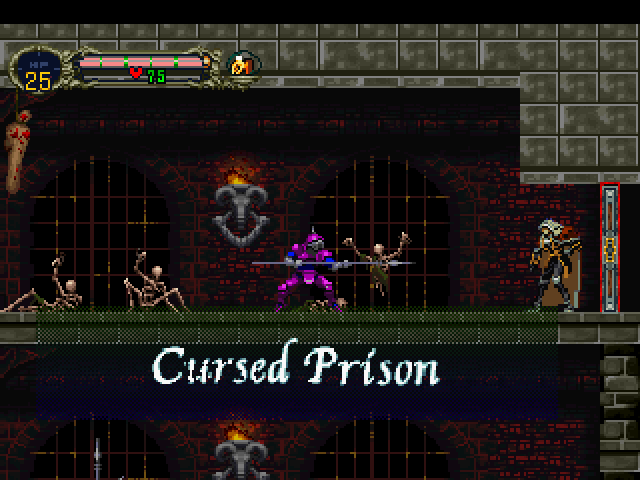
Other aspects, however, came across without issue. Reviewers of the time agreed that the game’s precise control was left untouched, the pixel art remained as resplendent as ever, and the sensational soundtrack stayed perfectly intact on the move to SEGA’s console. It could be argued that the game offers a very similar experience across both platforms, albeit with some visual and performance compromises on the Saturn.
There are, however, distinct advantages to the Saturn version.
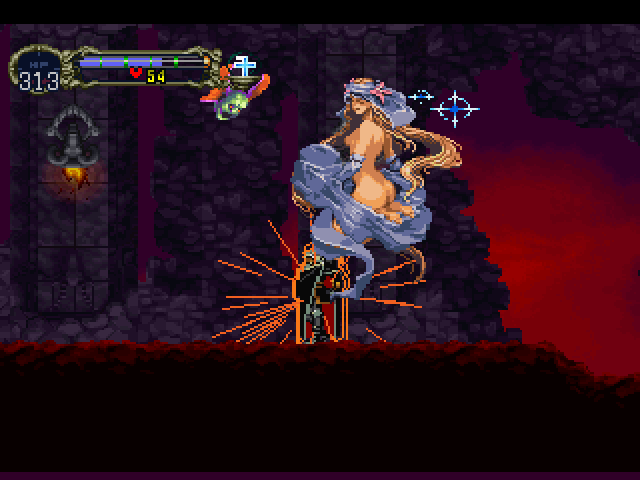
The Case for Saturn Castlevania – Exclusive Features
Saturn Controller Rocks the House: This one may be obvious, but it makes for a significant difference in experience. Sony’s ridiculous controller with its absurd d-pad really hurts the thumb when playing, compared to the Saturn’s exquisitely smooth directional key. Yes, controllers are a matter of preference, but as much as it pains Saturn fans to admit that Castlevania is better on the PlayStation, Sony fanboys must concede that the Saturn’s (Japanese) control pad is one of the greatest 2D pad designs in all gaming history. Now with quality official wireless options available, this aspect of the game isn’t even close: Castlevania with the Saturn pad blows the equivalent PlayStation experience out of the water.
Realtime Clock is Really Nice: One aspect of the Saturn’s architecture that the PlayStation doesn’t feature is an on-board clock, and the Saturn version of Castlevania takes clever advantage to deliver a few enhancements that are simply not possible on Sony’s machine. For instance, the castle’s important central chamber has a giant round clock in its center. In the PlayStation game, this clock displays time based on how long the game has been played. On the Saturn, the clock displays system time. If the Saturn’s on-board time is set correctly, then real-world time will show on the clock. A very nice touch that is beyond the PlayStation’s capability. Further, there is a pair of time-sensitive items that Alucard can find in the castle: the Sunstone and Moonstone necklaces. These give significant stat boosts either during the day or at night, and have no effect during opposite hours. On the PlayStation, this is implemented by counting the hours played in-game. The beginning of the game is assumed to be midnight, so the first 6 hours of gameplay count as nighttime, and then night and day alternate every 12 play hours. This is clumsy at best. On the Saturn, these items are again tied to system time, so during real-world 6pm to 6am it is the Moonstone that confers stat boosts, whereas from 6am to 6pm, the Sunstone is active. The effect is just so much more intuitive – and cooler! – on the Saturn.
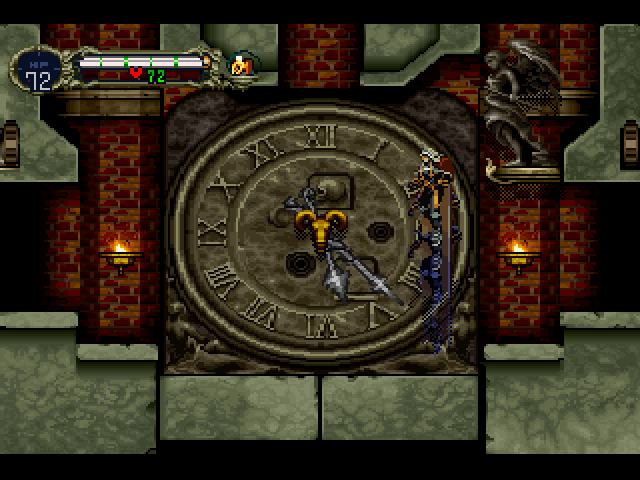
The Jewel Sword is Very Cool: The Saturn version features a few new weapons over the PlayStation original, including the sublime Astral Dagger found in the Cursed Prison. However, it is the Jewel Sword that is worthy of special attention. Available in both versions, this sword is occasionally dropped by the Discus Lord found in the Catacombs, and, as per the manual, “transforms enemies into jewels”. In practical terms this means it massively increases the chance that enemies will drop rings. Ornamental rings come set with a variety of jewels in Symphony of the Night, from Zircons to Onyxes to – most valuably – Diamonds. These rings have no use aside from being sellable to the Librarian; indeed, this is one way to quickly amass the stupendous amount of gold required to buy the Duplicator. In the Saturn version however, these rings also confer attack stat boosts, providing Alucard is equipped with the Jewel Sword. A lowly Zircon will give a +1 ATK stat boost, whereas the mighty Diamond will give a whopping +32 ATK! Now… two rings can be equipped at the same time, meaning that two Diamonds will improve the Jewel Sword by a stunning +64 ATK. This Saturn-exclusive attribute makes the Jewel Sword one of the most powerful weapons in the game.
(A +64 ATK boost must be named in honor of the N64 version of the game… oh, that’s right. There is no N64 SotN)

The Godspeed Shoes: It doesn’t take long for Castlevania players to wish Alucard could move just a little bit faster. Speedrunners incessantly exploit Alucard’s backslide move to increase movement speed; this turns speedruns into a somewhat bizarre spectacle to watch. The Saturn version provides a huge quality-of-life improvement here with the exclusive relic item Godspeed Shoes. Found only at mid-game right as players ascend to the Inverted Castle, the Godspeed Shoes allow Alucard to run; a far faster locomotion than his usual gait. To be frank, this relic ought to have been included much earlier in the game, but is nonetheless most welcome as an item that enhances gameplay.
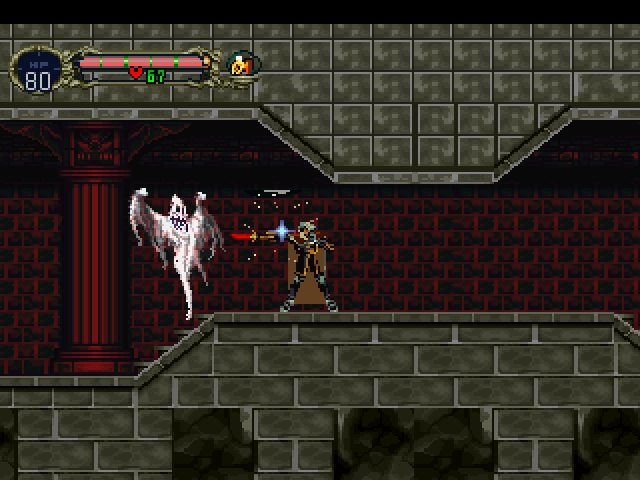
Alucard’s Pocket: The Saturn version sees Alucard have a ‘third hand’ available for holding certain items in-game. Assigned by default to the left shoulder button, this ‘pocket’ can hold any restorative item. This allows players to equip Alucard with a weapon and shield, and a healing item in his pocket which can be activated in-game with the press of a button. This subtle but surprisingly effective improvement negates the need to open the menu, un-equip one of Alucard’s hands, equip a healing item, return to the game, use the item, then immediately return to the pause menu and re-equip whatever item was equipped initially. For all the complains about the castle map being available at the press of a button on the PlayStation but awkwardly placed in the pause menu on the Saturn, the ability to call up a healing item without entering the pause menu is the more useful shortcut – and it’s only available in the Saturn version.
Exclusive Content Round-up: This guide’s aim was to highlight some of the more subtle ways in which Saturn Castlevania improves upon the PlayStation original. The rest of the exclusive Saturn content, detailed below, is generally far better known.

Immediately upon starting the game, players can choose between playing as Alucard, Richter Belmont, or Maria Renard. Richter becomes selectable only after completing the game on the PlayStation, and Maria is never playable at all. On the Saturn, Maria is an evolution of her younger self from Rondo of Blood and, thanks in part to her triple jump, offers more of a fast-paced arcade-like playthrough. Richter, of course, caters to the more traditional whip slinging Castlevania adventure fans.
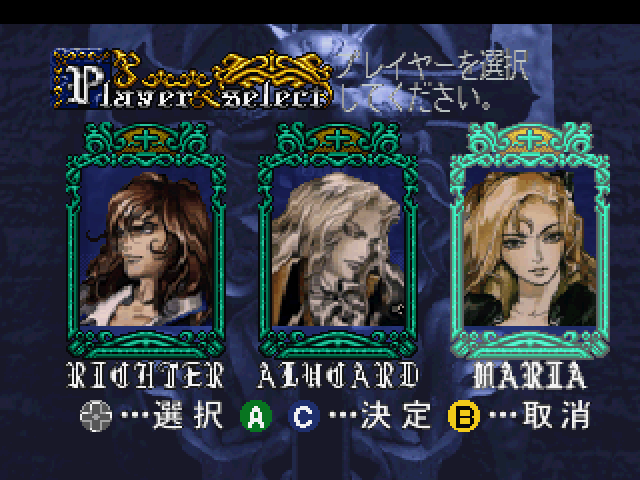
There are two all-new sections in the Saturn game. The Cursed Prison is a straightforward area sandwiched between the Underground Caverns and the Marble Gallery, whereas the Underground Garden is a longer, more varied area accessed near the castle entrance. Both areas feature all-new enemies for Alucard to encounter, and the monsters are of the same superb design quality as the rest of the game’s bestiary. These include the likes of Will-o-Wisps, Skeleton Beasts, and even a Mad Gardener. The Underground Garden even features its own boss – the Skeleton Leader! In the inverted castle, the new areas become the Soul Prison and the Hell Garden, and again feature new monsters, such as Efreets and Wraiths. There is also a handful of new weapons for Alucard to uncover.
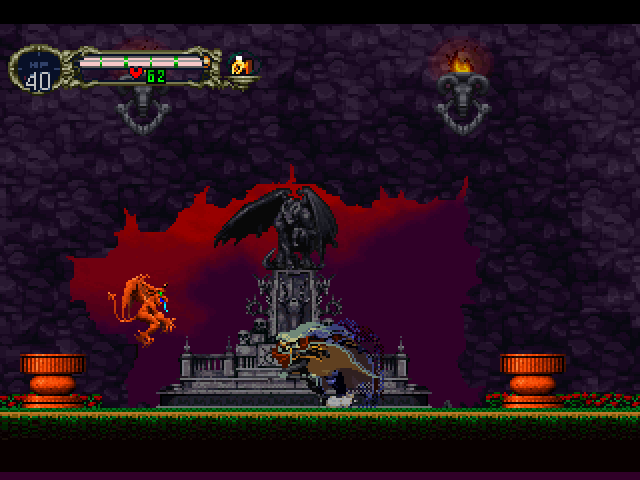
The journey to the inverted castle is a bit more drawn out on the Saturn. Here, if certain conditions are met, Alucard will encounter Maria and must fight her as a boss character. If he defeats her, Maria gifts him with the Holy Glasses; key to unlocking the inverted castle. In the PlayStation game, there is no Maria boss fight as she simply hands over the glasses during a conversation cutscene.
The Saturn game also features several additional music tracks, most of which are remixes of past great Castlevania tunes. There is a new track for the Cursed Prison level, and an absolutely fitting, grandiose track named ‘Guardian’ which plays during the Saturn-exclusive Maria battle. The game’s soundtrack is already amongst the best of the generation; these additional touches are the cherry on an exquisite slice of aural cake.
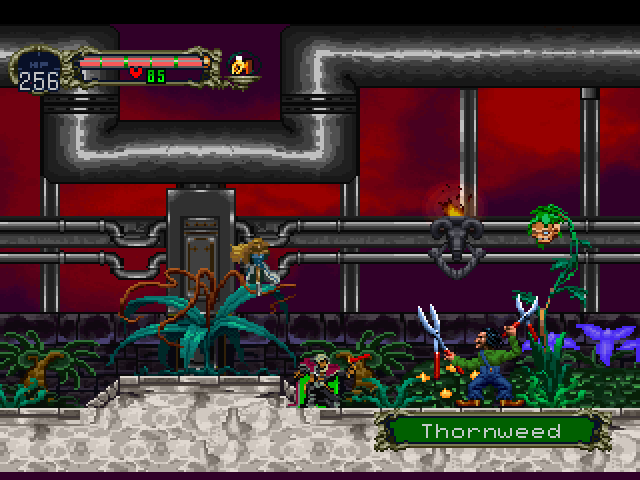
In the End…
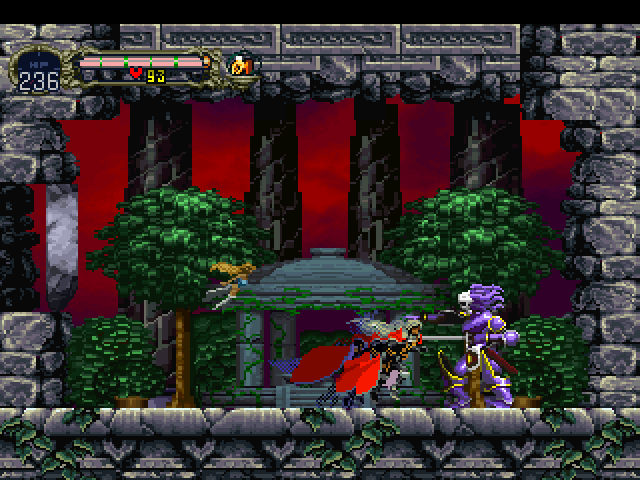
The Saturn game appears absolutely dynamite on paper, but we must concede that pound for pound, there is little doubt about which version is best. The PlayStation original’s stunning visual effects, primarily with the mega-effective artistic transparencies, puts Sony’s version on top. That said, under no circumstances is the Saturn port as dreary as some would have you believe. Fans who simply can’t get enough of this game should of course play both versions – on the PlayStation to witness the better visual fidelity and on the Saturn for the superior controller and additional content. As for the Saturn game on its own… it is a top-tier Saturn game and one of the greatest games of the generation, with stellar design, scrumptious goth-themed pixel art, a varied and interesting bestiary, and a killer soundtrack. Castlevania: Symphony of the Night is most definitely worth a Halloween play on the SEGA Saturn.
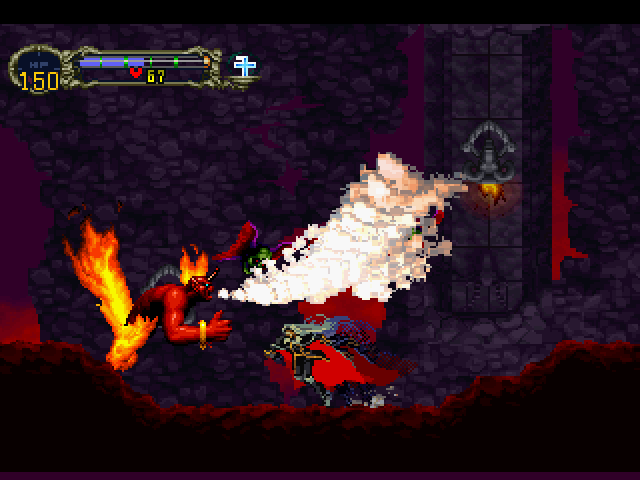
Editor’s Note: screenshots taken from the v1.02 English-patched Saturn version, created by Knight0fDragon. For information about the patch, please head to https://segaxtreme.net/.

A Saturn fan since the beginning, Peter plays Saturn almost exclusively. For Peter, Saturn represents a moment in time where 2D games were at their best, 3D was just rising, and fascinating gaming ‘firsts’ were commonplace. There are very few Saturn games that Peter cannot find some enjoyment in!
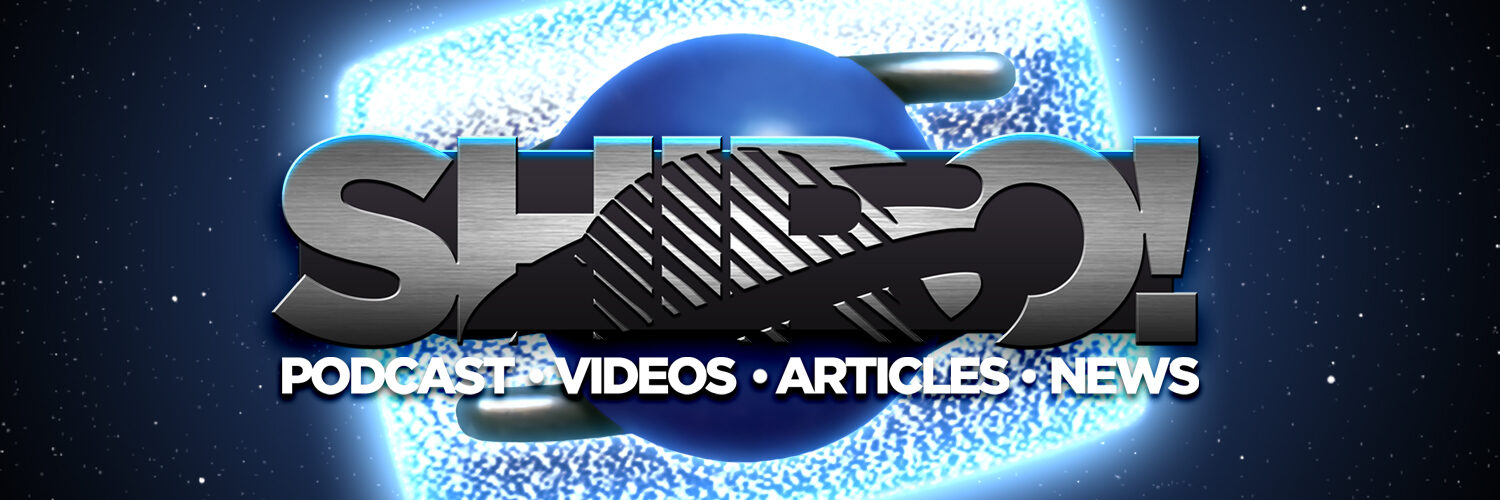
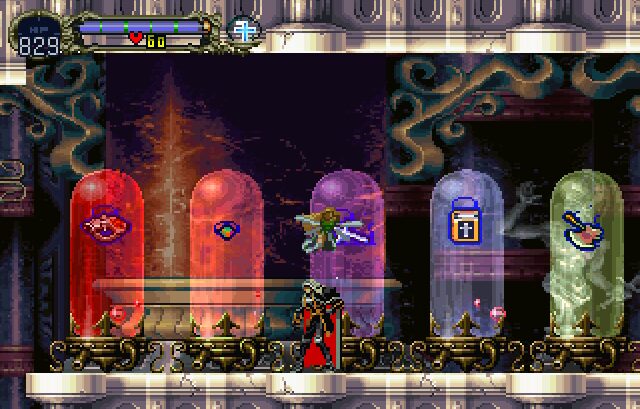
Very nice write up as always, Peter. I myself have been touting the greatness of the Saturn version for 23+ years!
Most people that seem to talk crap about the game are just regurgitating what others have said online, with very few people actually playing the game – or at least playing it enough to experience the unique things that make the Saturn version so special.
I personally would never go back and play the PlayStation version again. I actually did recently, and honestly the game feels like a unfinished shell of what it should be after playing the Saturn release for all of these years.
Thankfully, the fantastic patch from Paul Met and Team Meduza has addressed many of the issues that dragged down the initial release, making for a much more enjoyable experience!
In my eyes, it’s the definitive way to play the game – though surely some will disagree… Their loss though if you ask me!
Thank you Adam! Yes I personally prefer the Saturn version myself and have easily logged 10x the time on Saturn compared to PlayStation. The PS does seem unfinished after experiencing all the unique Saturn content. The clock / system time is perhaps my favorite Saturn exclusive 🙂
You still forgot an extra exclusive bonus for the Saturn version, dear Peter ! There’s one more familiar on the Saturn version to get in an exclusive way : Half-Faerie Familiar (Japanese versions only): Basically identical to the normal Faerie, but in some versions you can get her to sing a song. If you’re playing the Saturn or Japanese “PlayStation the Best” version, activate the Half-Faerie and sit in a chair somewhere, and wait a few
minutes. (You’ll also need the Lyric Card equipped if you’re playing the Saturn version.) This faery has been included in the PSP version after this, in the compilation with Rondo of Blood. But the US PlayStation didn’t have it, you had to get “the Best” Japanese editions to get these extra cards. They were included in the Saturn edition.